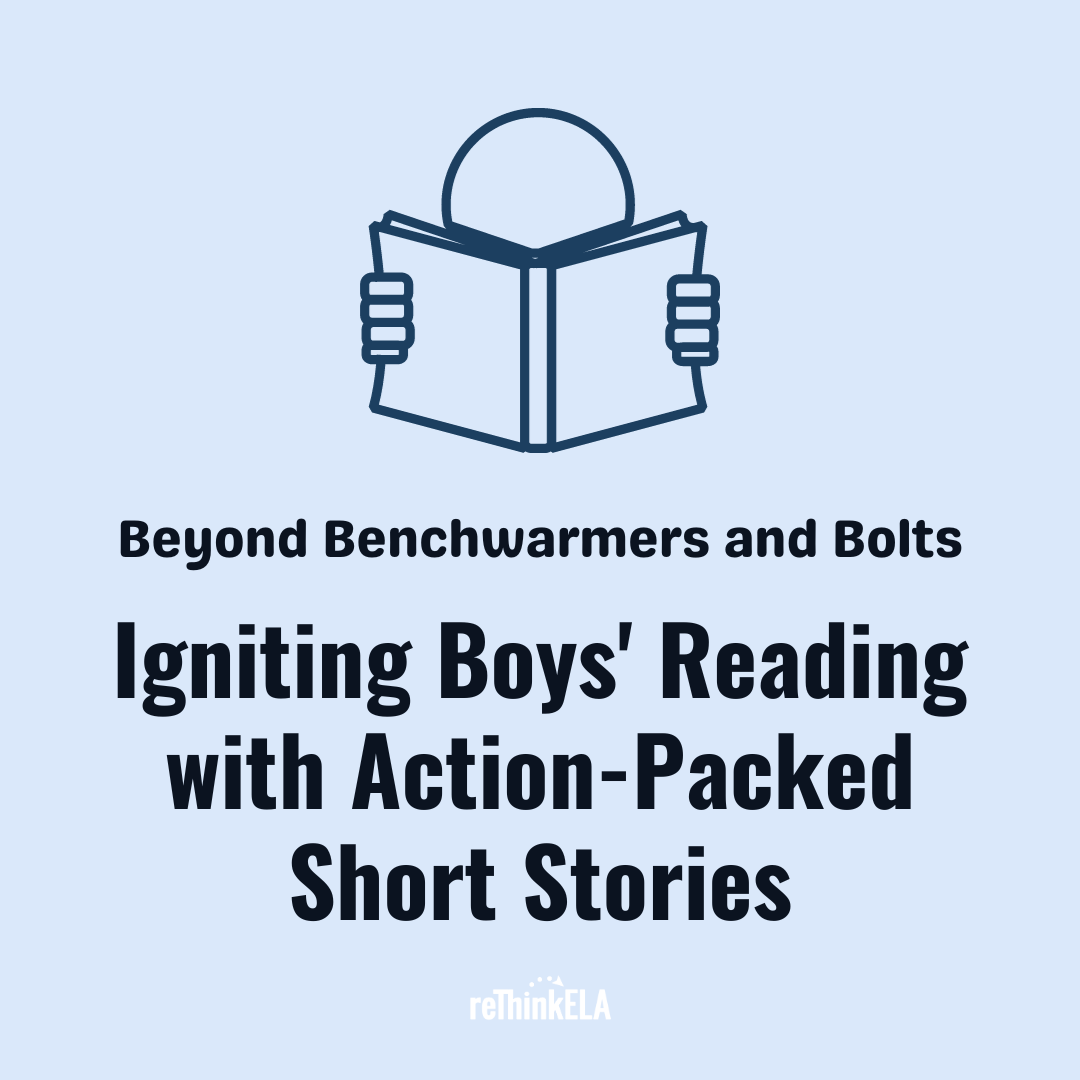
Ever introduce a classic novel to your middle or high school students, only to watch their eyes glaze over? I’ve had this happen at every grade level I’ve taught, from 6th grade all the way to the 11th grade.
One year in particular, I had a class of mostly boisterous, outdoorsy, athletic, mechanically-inclined boys who told me in no uncertain terms that they did not read and that they did not write. Many of them loved telling their own stories and engaging with television shows, movies, and music of their own choosing, but they would shut down at the very idea of reading a whole novel and work together to completely disrupt the class.
I accepted this challenge and ditched my lesson plans for the year.
Since then, I’ve had several teachers share the same story with me over the years. Some are middle school teachers, others are high school teachers. They’re disheartened and at a loss for what to do. Their stories run something like this:
My junior class in American literature poses a unique challenge. Nearly all are male, primarily from vocational or working-class backgrounds, and some are still navigating English as their second language. Their reading levels, vocabulary, and understanding of figurative language pose hurdles, and I fear classic novels, with their complex language and historical context, will leave them adrift. I'm seeking alternative pathways to engage them with American literature, fostering their growth without the frustration of inaccessible material. Any suggestions on how to meet them where they are and ignite their passion for American stories?
I love this question and the teachers desire to meet students where they are and help them grow.
My answer is: Start with short stories. For students that meet this demographic, I recommend “The Most Dangerous Game,” “That Bass, the River, and Sheila Mant,” and “To Build a Fire” (This last one is especially appropriate right now —and if you’re a member of the Curated Short Stories Library, check your email. I sent you a direct link to the resources on Sunday evening).
When you have students who resist reading, starting them off with short stories based on their interests is important because you don’t want them to shut down before they ever get started. Additionally, starting out with short stories:
- Sparks interest in reading: Short stories offer variety and quick completion, making them more accessible and appealing to reluctant readers.
- Connects to diverse perspectives: Exposure to different characters and settings in short stories expands students' understanding of the world and fosters empathy.
- Promotes classroom discussion and collaboration: Analyzing and discussing short stories together creates a sense of community and shared learning in the classroom.
- Offers opportunities for creative expression: Students can engage with short stories through projects like rewriting endings (or rewriting the entire story), creating art pieces, or performing scenes.
- Provides a break from longer texts: If you’ve already been teaching books, then short stories offer a refreshing change of pace compared to dense novels, helping students maintain focus and motivation.
To further encourage students, you’ll need to provide the scaffolding they need to succeed. That could include video adaptations to help students grasp the overall setting, plot, and characterization in the story. You might provide the audio version of the story so students can listen as they follow along. This way, even if they struggle with decoding, students can still engage with the narrative, follow the plot, and unpack the figurative language.
I also recommend providing students with an environment where they can read and discuss the works in groups. Collaborating with their peers in healthy ways will make the readings more engaging — and the learning more enjoyable. Students learn better when they’re motivated and confident that they can succeed!
Sound like a winning combination? You can click the short story links above to access our free resources, or click the button below to subscribe to the Curated Short Stories Library where you can access all of the short story resources in one place.
If you have additional ideas, please share in the comments!
